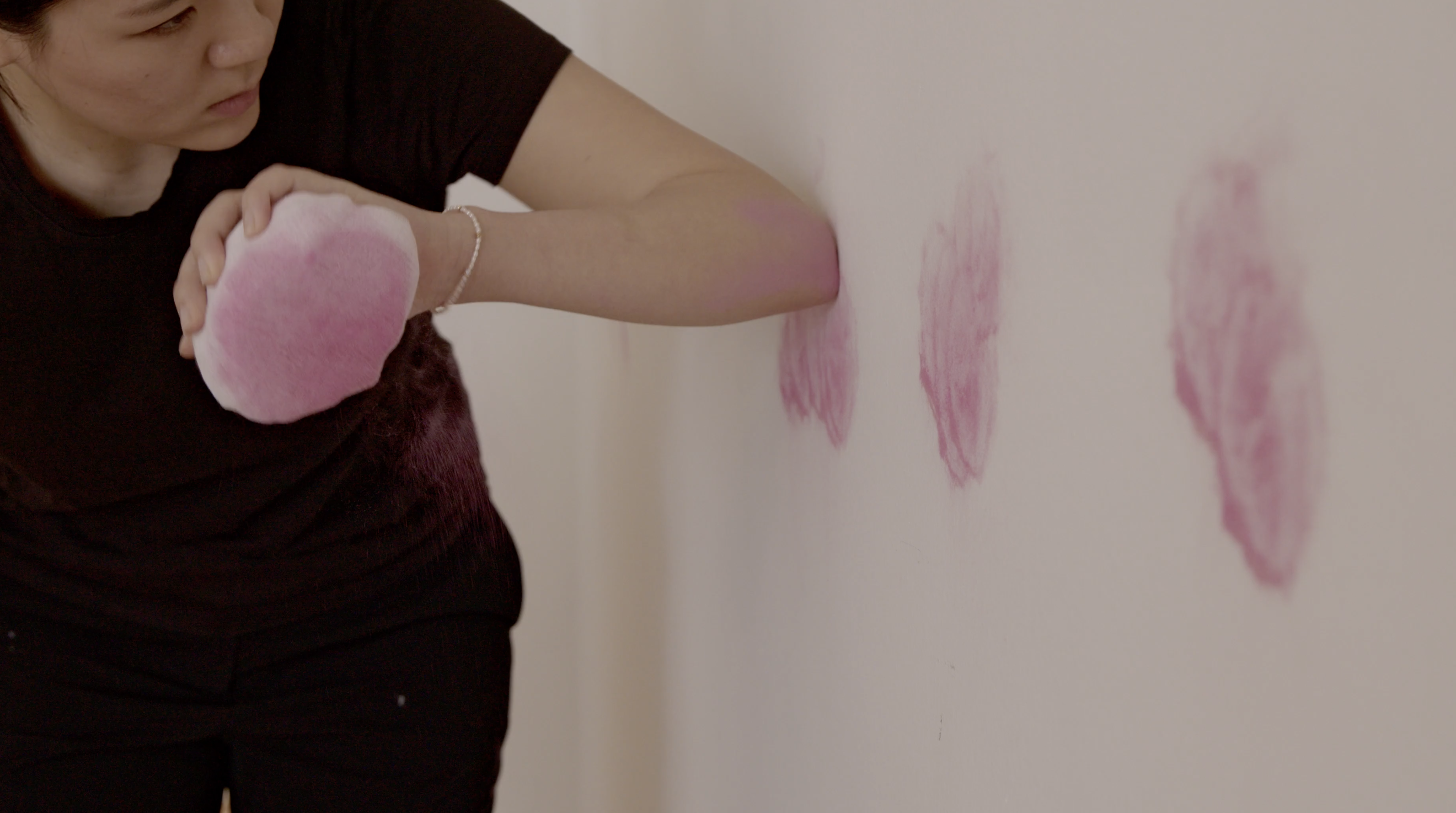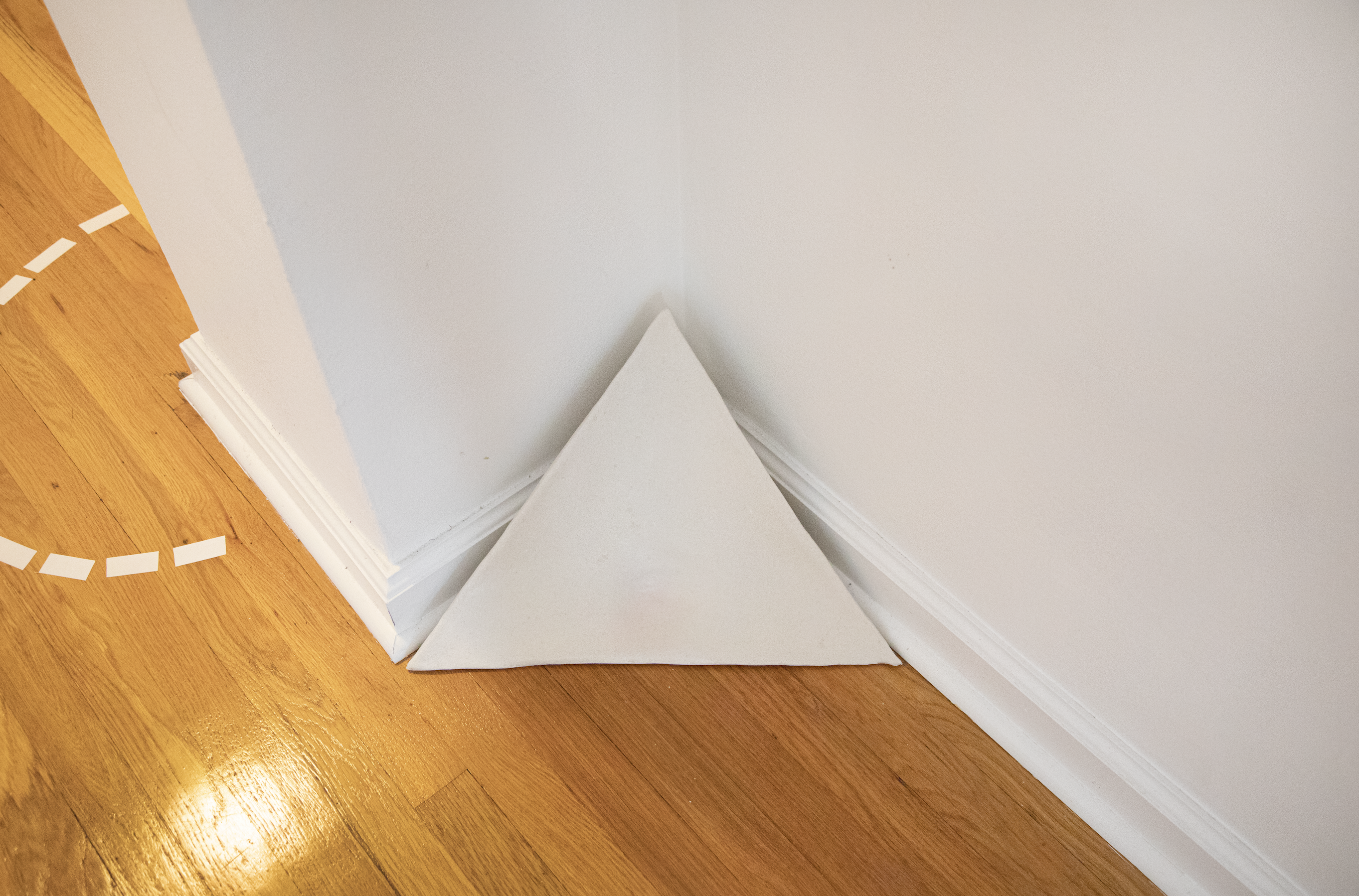2022 insulation foam, wall compound, ceramic, dimension variable, performance duration 16min
performance documentation by Ryan Wang
Throughout her practice, Hyoju Cheon has explored the relationship between movement, space, and materials. Her site-specific installations and performances respond to her physical surroundings and investigate how bodies traverse built environments. In Mapping without Scale, Cheon considers how the home affects the bodies that inhabit it with a series of ceramic and insulation foam objects. In addition to these physical works, during the opening of the exhibition (June 1st from 6-8 pm), the artist will stage a performance reenacting the process of creating the works.
Set in the domestic setting of the gallery, Cheon’s interventions consider the home as contradictory. Despite being a place where one may spend much of their time, the domestic space is often overlooked. Inconspicuous nooks in walls, floors, and corners are the points of departure for her installation. The site-specific works presented in Mapping without Scale map these unnoticed spaces to emphasize their presence and materiality.
The word “map” is derived from the medieval Latin mappa mundi, in which mappa means napkin or cloth, and mundi the world. Unlike the cartographic tradition, which is rooted in a scientific and exact understanding of space, Cheon’s practice is an alternate form of mapping: one that charts the body’s trajectory through space. Her process begins by sketching out the nooks and crannies in the gallery and drawing abstract and amorphous forms that inhabit them. Cheon then recreates these shapes three-dimensionally using clay or insular foam. Next, she imprints her body onto these objects, leaving remnants of her form and mass before firing the clay and carving the insular foam to capture these voids.
To Cheon, however, empty space is full of possibilities. Rather than viewing them as hollow, she suggests that they contain the potential to re-establish the relationship between the body and the home. By leaving her imprints on the objects, she invites the viewer to reconsider their relationship to the lived space. Taking into account the fact that insulation foam has historically been used as a construction material in most urban dwellings, and that ceramic is frequently employed in kitchens and bathrooms, the materials that Cheon uses refer to both the gallery’s particular built environment and a shared structure of domestic spaces.
By mapping how her own body interacts with the space and defying traditional scaling systems, Cheon locates the uncharted or hidden landscapes of our bodies’ relationship to the home. It is perhaps best understood as a practice of mapping without scale.
— Ho Won Kim


performance still image



